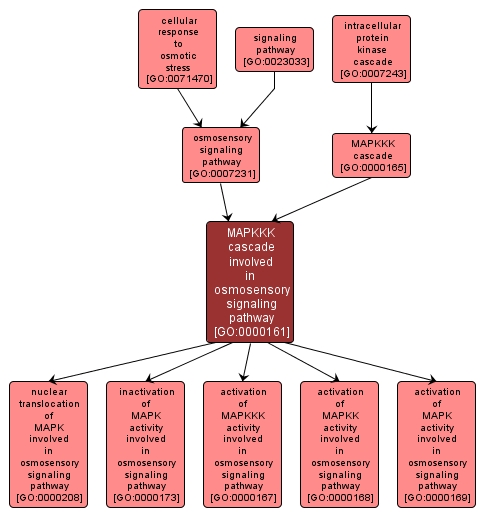GO TERM SUMMARY
|
| Name: |
MAPKKK cascade involved in osmosensory signaling pathway |
| Acc: |
GO:0000161 |
| Aspect: |
Biological Process |
| Desc: |
MAPKKK cascade involved in signal transduction in response to change in osmotic conditions. |
Synonyms:
- osmolarity sensing, MAPKKK cascade
- MAPKKK cascade during osmolarity sensing
|
|

|
INTERACTIVE GO GRAPH
|














